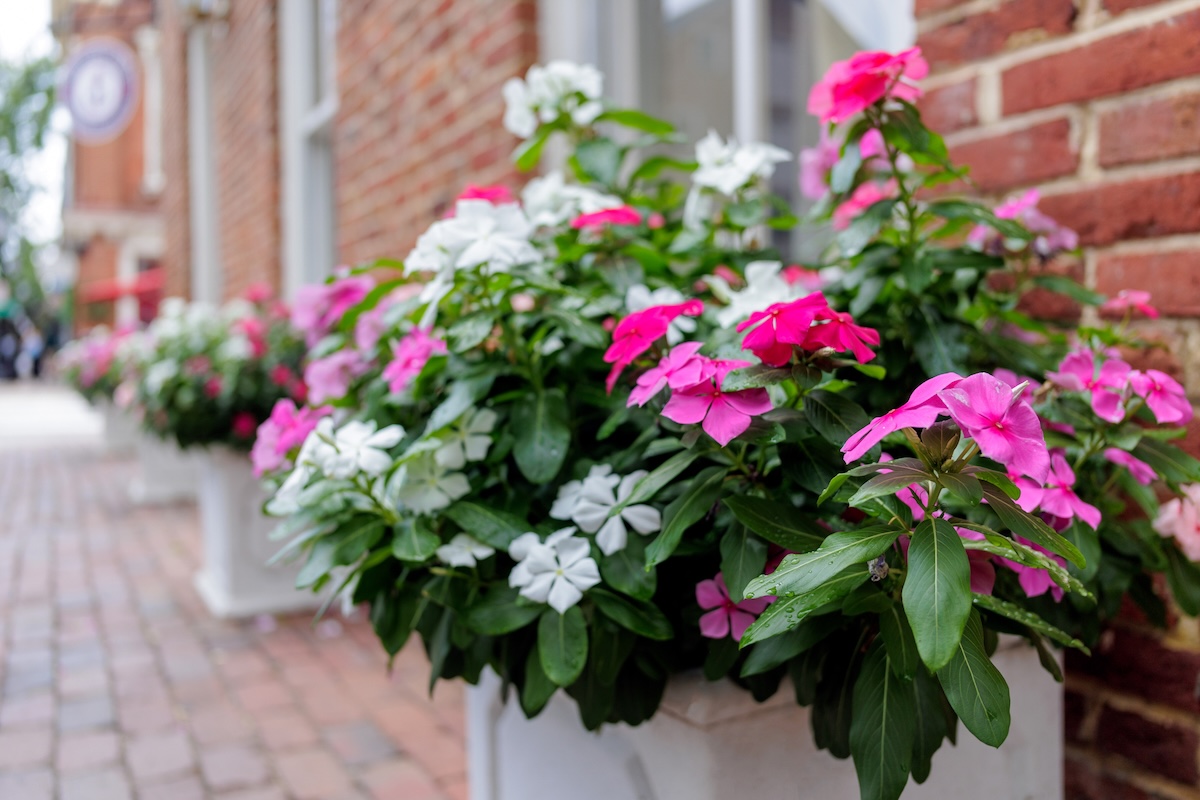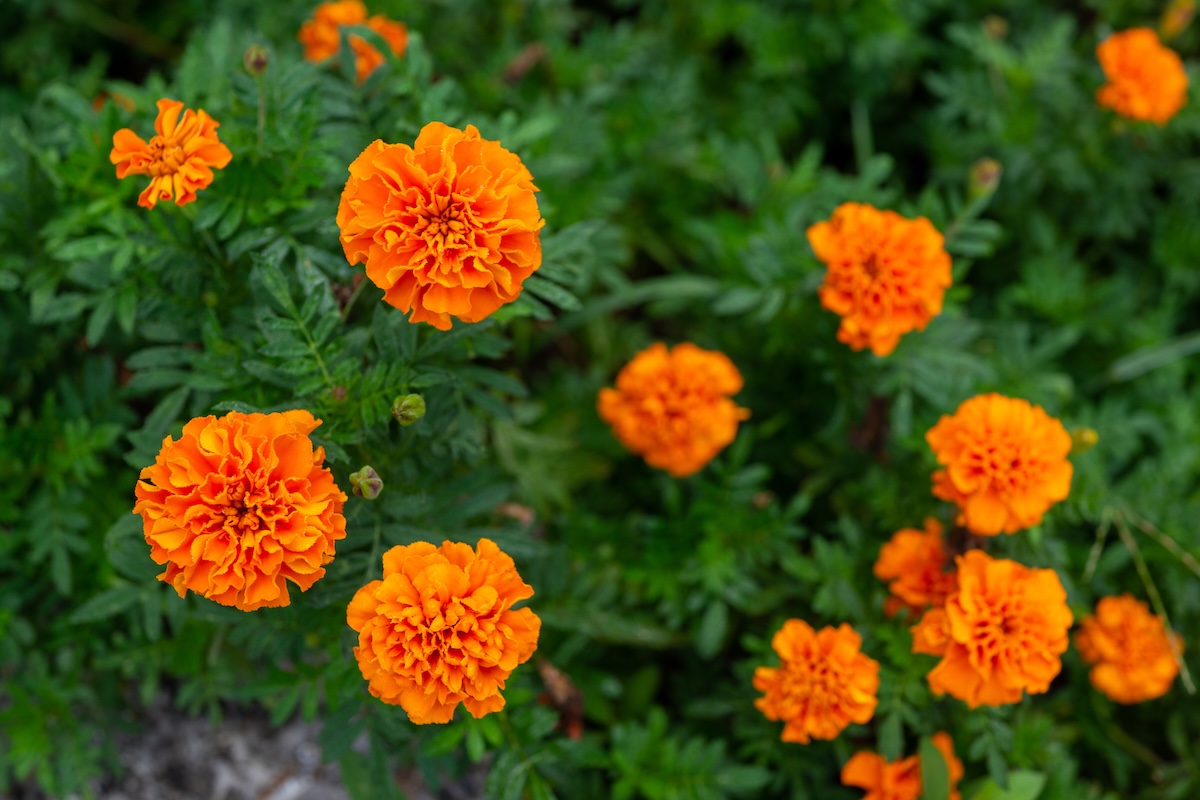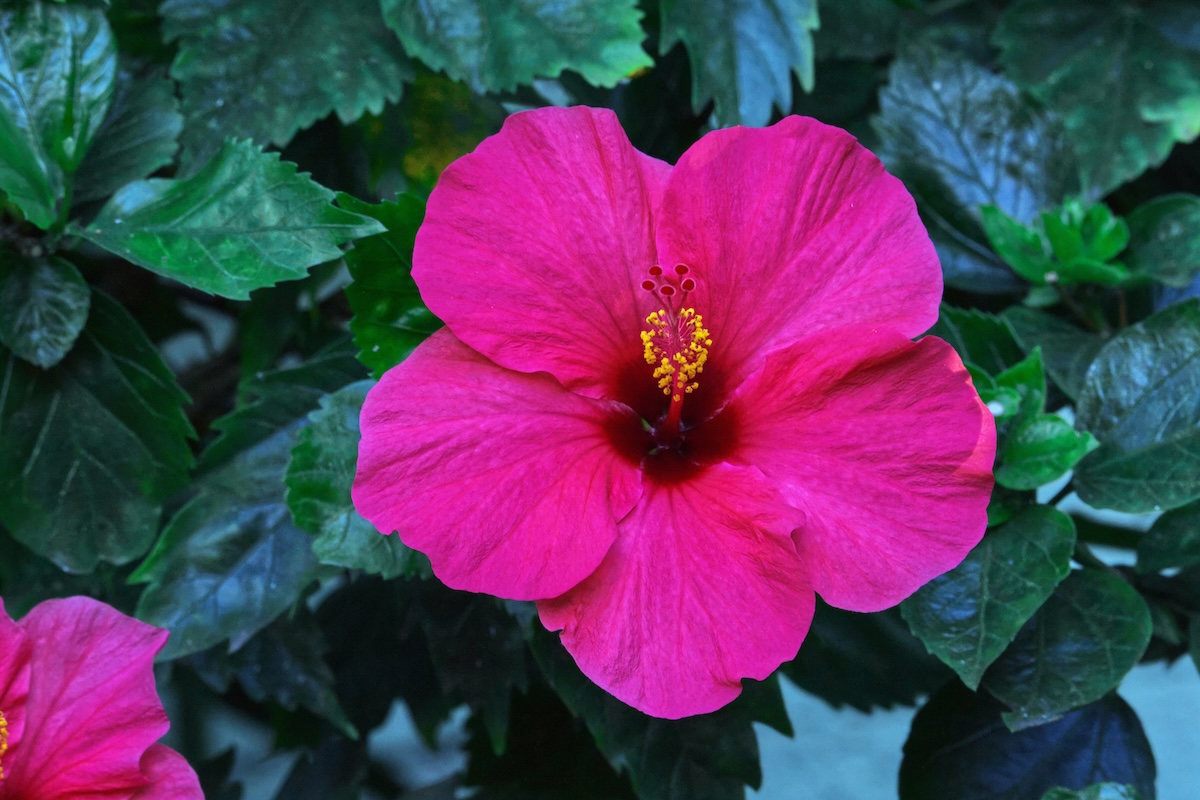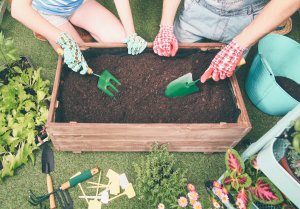Container gardening isn’t just for vegetables. Growing flowers in containers offers a versatile method of adding color around your yard. Whether you live in an apartment, have limited space, are new to gardening, or want a little more control over a plant’s growing conditions, using outdoor potted plants allows you to enjoy flowers in your outdoor living areas.
Their portability lends itself to landscaping, enabling you to add blooms around hardscaped areas where inground flowerbeds aren’t possible, such as pools, decks, and balconies. Strategically placing potted plants outdoors can frame a view, provide a focal point, or define walkways. We consulted experts to nail down the following top flowering plants for pots.
1. Geranium (Pelargonium)
One of the most popular and easiest potted plants to grow is the traditional geranium, loved for its bright flowers in red, pink, white, or salmon that bloom all summer. Cheerful flowers are set against rounded, ruffled leaves with a dark interior. These affordable beauties are a garden staple.
Typically grown as annuals in temperate zones, geraniums, also known as cranesbill, are easy to winter over and to propagate. While they can tolerate some light shade, these are full sun flowers for pots that require little maintenance. Be sure the planting pots have drainage to prevent root rot.
Best For: Sunny locations that are warm but not too hot and not too humid
Get geraniums at Tractor Supply for $40.99
2. Petunia (Petunia spp.)

One of the best flowering plants for pots is an old standby: the petunia. Its bell-shaped flowers are available in white, red, pink, salmon, yellow, purple, and black, as well as new striped, speckled, and fringed varieties. Petunias have been used in flower gardens for decades because they bloom continuously throughout the summer with little fuss.
These colorful annuals require full sun and fertile, well-draining soil that is not allowed to get soggy. As heat-tolerant plants, they don’t need frequent watering. Midsummer pruning of leggy plants will renew their vigor and transform them into compact, bushy plants.
Best For: Hanging baskets, window boxes, or pots that allow it to drape
Get petunias at Lowe’s for $3.98
3. Lavender (Lavandula angustifolia)

Lavender is a drought-tolerant herb that produces fragrant perennial flowers in pots. Known for the fragrance from its purple blooms, which attracts pollinators and repels pests, lavender is a compact, bushy plant featuring blue-green, needle-like foliage topped by small blue-violet flowers on spikes.
Nathan Thorne, horticulturist and CEO of Handy Flowers, frequently suggests lavender for sun-loving containers, noting that it “doesn’t require much water or heavy soil.” It does need well-drained soil and winter protection.
“Plus,” adds Whitney Laritson, head of marketing for Nature Hills Nursery, “you can snip a few stems off and use them in cooking or as aromatics.”
Best For: Full sun, containers, flower beds
Get lavender at Nature Hills for $39.90.
4. Lantana (Lantana camara)

Lantana is one of the low-maintenance evergreen plants for pots (in warm growing zones) that prefers full sun and moist soil. Because they don’t like to dry out, a self-watering pot may be suitable during the hottest months, but be careful that they don’t sit in soggy soil. They don’t require frequent fertilizing, but will appreciate a half-strength application in the spring.
A profuse bloomer, lantana is a fast grower. Pollinators including butterflies, bees, and hummingbirds are attracted to its clusters of tiny multicolored blooms, usually in red-orange-yellow or pink-purple-yellow combinations. However, it is toxic to dogs, cats, and horses.
Best For: It’s a good specimen plant and does well in hanging baskets.
Get lantana at The Home Depot for $22.87
5. Portulaca (Portulaca grandiflora)

Also known as moss rose, portulaca is related to purslane. Typically grown as an annual, this succulent prefers full sun. It should be allowed to dry out between waterings. Although low-growing, it can spread, making it an option for hanging baskets.
Small, double, rose-shaped flowers in pink, yellow, orange, red, purple, and white bloom abundantly in the morning but may close during the heat of the afternoon or on cloudy days. Leggy plants can be cut back, but there’s no need to dead-head, as spent blooms fall off by themselves. This plant is toxic to dogs and cats.
Best For: Full sun, hanging baskets, containers, rock gardens
Get portulaca at Walmart for $4.97
6. Impatiens (Impatiens spp.)

If you want to brighten a partial- or full-shade area with lots of color, impatiens should be at the top of your list. Perfect for pots or window boxes because they don’t grow too tall, they will put on a summer-long display in white, red, pink, violet, coral, purple, and the recently-introduced yellow in single or double flowers.
They like rich, moist soil, but need good drainage to avoid mold, downy mildew disease, and root rot, so when you select pots for gardening, be sure to choose one that allows water to escape. Impatiens will appreciate bi-weekly fertilizing.
Best For: Shady spots, containers, hanging baskets, window boxes, flower beds
Get impatiens at The Home Depot for $10.98
7. Marigolds (Tagetes)

The pungent bold yellow, orange, and dark red flowers make the marigold a favorite of gardeners. A proliferate and reliable bloomer from early summer through frost, this fast-growing annual produces flowers in a variety of sizes, single and double.
Compact plants with fern-like foliage are ideal for container gardening. Although they require full sun, they’re not fussy about soil type, as long as it’s not too acidic. Somewhat drought-tolerant, they bloom better with regular watering. Their resistance to pests and diseases, along with their ability to attract pollinators while deterring pests, adds to their appeal.
Best For: Full sun, containers, gardens, borders
Get marigolds at The Home Depot for $23.98
8. Tropical Hibiscus (Hibiscus rosa-sinensis)

Add height with some large potted plants by including tropical hibiscus. They can grow into a bush or a tree, depending on variety and pruning. Glossy serrated foliage serves as backdrop for an almost endless variety of colors. Their stunning trumpet-shape flowers can be single, double, fringed, pendant, or with a petaled dangling stamen.
Hibiscus demand full sun, are heavy feeders benefiting from regular fertilizing, and tend to be thirsty, requiring an inch or two of water per week in hot weather as long as they live in well-draining soil. Expect blooms spring through late fall—and longer if you over-winter them indoors.
Best For: Large, sunny spots where a little exotic flare is desired
Get tropical hibiscus at Amazon for $29.89
9. Fuchsia (Fuchsia spp.)

Delicate, intricate bell-shape flowers with “ruffled skirts” characterize this exotic tender perennial. Pendulous flowers, typically two-toned in bright reds, pinks, and salmons, with white or purple centers, attract hummingbirds and other pollinators, particularly when planted in hanging baskets.
Fuchsias don’t like humidity, direct sunlight, or too much heat. Blooms will stop or slow when temperatures exceed 80 degrees. Gentle morning sun (or partial shade), moist, well-drained soil, and an abundance of diluted fertilizer will keep these fussy beauties blooming all summer long. Protection from the wind and adequate watering will help prevent bloom drop.
Best For: Hanging baskets, partially shady locations, eastern exposure
Get fuchsia at Walmart for $25.99
10. Begonia (Begonia spp.)

Begonias are another excellent choice for hanging baskets and shady spots. Available in a range of colors—of foliage as well as sparkly, almost iridescent rose-shape flowers—and sizes, they provide constant color.
Most varieties need partial sun, but some of the bronze-leaved types and wax begonias can tolerate more sun, but all begonias must have well-draining soil because their tuberous roots and stems are susceptible to root rot. They benefit from regular fertilizing, but there’s no need to deadhead, although pruning can prevent them from becoming leggy. Because they’re toxic to pets, placement should be carefully considered.
Best For: Partial shade, hanging baskets, containers
Get begonias at Burpee for $24.95
11. Salvia (Salvia spp.)

Salvia, sometimes called sage, is actually in the mint family. This drought-resistant, low-maintenance plant is used in containers to provide a little height along with a pop of color—usually red, red and white, blue, or purple. Spikes of tubular flowers stand out from velvety green or green/gray foliage that has a soft aroma akin to sage.
Heat- and drought-tolerant, salvia is a low-maintenance pollinator magnet that requires full sun and well-draining soil. Tropical perennials in some growing zones, they are commonly used as annuals in northern gardens and will bloom copiously from early summer until frost. Best For: Full sun, containers, gardens
Get salvia at Fast Growing Trees for $35.95


